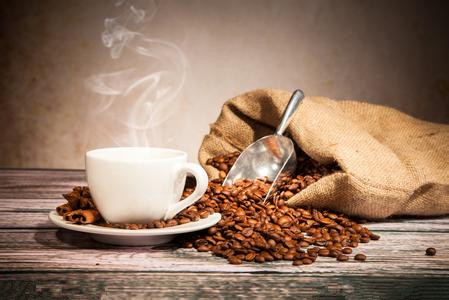Treatment of Coffee Fruit and Coffee beans

When the coffee fruit is harvested from the mountain, the next step is to remove the peel and pulp of the coffee beans. There are two main ways of treatment: washing and solarization. But the ultimate determining factor is whether there is enough water to use. Some special boutique coffees are both insolated and washed.
Washing requires the use of special machinery and equipment and adequate water sources. When properly treated, the special characteristics of coffee beans can be more highlighted. In addition, the number of bad beans can also be removed in large numbers during the washing process, so that the quality of coffee beans can be improved. The procedure of washing coffee is widely used in Central and South American countries.
After the coffee beans are harvested, they will first make a simple selection to remove impurities. After that, a truckload of trucks will carry the coffee beans into a large sink, and clean and flowing water will wash the coffee beans into the waterway. Ripe coffee beans should be dense and sink under the waterway. Damaged coffee fruits, branches, leaves, and lighter impurities float on the water surface and are isolated and removed by a filter above the waterway.
After being washed and sorted in the waterway, the pulp of the ripe fruit will be removed by the pulp remover. This step is the most different from sun-cured coffee, because the pulp and beans are separated before the sun.
At this time, the outer layer of the coffee bean is covered with a layer of sticky soft parchment, which can protect the integrity of the coffee bean. The washing process should be carried out immediately after the coffee is harvested to avoid taste contamination caused by pulp decay and the deterioration of the quality of the coffee beans.
After that, the coffee beans are placed on a mechanical strainer. The shaken strainer will separate the immature beans and bad beans that were not separated in the previous washing step. Successfully filtered coffee beans are put into the waterway for the second time and cleaned and sorted again with clean water.
Due to the peeling machine, there is bound to be some residual pulp still attached to the parchment of coffee beans. Coffee beans are then placed in a fermentation tank to decompose the residual pulp and parchment with natural enzymes. The fermentation process usually ends within 24-36 hours, depending on the temperature, the thickness of the residual pulp, and the concentration of enzymes. Next, the coffee beans will be washed with clean water until the pulp and parchment are removed. The fermentation process must be strictly monitored, otherwise, some bad sour taste or taste will be contaminated on the coffee beans. After processing, the surface of the coffee beans will become rougher and less sticky.
After fermentation and washing, the water content of coffee beans is about 57%. Due to the excessive moisture of coffee beans, the water content is usually reduced to 12.5% by machine drying or sun exposure. If you use machine drying, it usually takes 2-3 days to effectively reduce the water content to the ideal data. If you use the sun, you need the weather, and the relative time will be extended to 1-2 weeks.
When the water content of coffee beans is effectively reduced to 12.5%, the coffee beans will be stored for export. Finally, before the coffee is exported, the parchment and the last layer of silver will be removed by machine. Then, it goes through the steps of cleaning, screening, classification, classification, and packaging.
Washed coffee beans can make the coffee taste cleaner, free of miscellaneous flavors and have charming fruit aromas. The color of washed coffee beans will be more turquoise or grayish green. The coffee in the washing process tastes clear, bright and free of miscellaneous flavor.
Important Notice :
前街咖啡 FrontStreet Coffee has moved to new addredd:
FrontStreet Coffee Address: 315,Donghua East Road,GuangZhou
Tel:020 38364473
- Prev

Treatment of Coffee Fruit and Coffee beans
The solarization process can also be called a natural process, which is basically the oldest, simplest, and requires the least mechanical tools. The first step is to sort and clean it up first. Immature, overripe, damaged coffee fruits will be singled out first. At the same time, the branches, leaves, mud and stones mixed in the fruit will also be removed. Sieves are usually used to deal with this preliminary
- Next

The main ingredients of coffee basic knowledge of fine coffee beans
Caffeine: it has a particularly strong bitter taste and stimulates the central nervous system, heart and respiratory system. Appropriate amount of caffeine can also reduce muscle fatigue and promote digestive juice secretion. Because it promotes kidney function, it is diuretic and helps the body to expel excess sodium ions from the body. But eating too much can lead to caffeine poisoning. Tannic acid: boiled tannic acid will be decomposed into pyrouric acid
Related
- Beginners will see the "Coffee pull flower" guide!
- What is the difference between ice blog purified milk and ordinary milk coffee?
- Why is the Philippines the largest producer of crops in Liberia?
- For coffee extraction, should the fine powder be retained?
- How does extracted espresso fill pressed powder? How much strength does it take to press the powder?
- How to make jasmine cold extract coffee? Is the jasmine + latte good?
- Will this little toy really make the coffee taste better? How does Lily Drip affect coffee extraction?
- Will the action of slapping the filter cup also affect coffee extraction?
- What's the difference between powder-to-water ratio and powder-to-liquid ratio?
- What is the Ethiopian local species? What does it have to do with Heirloom native species?

